| ________________
CM . . .
. Volume XXI Number 16. . . .December 19, 2014 
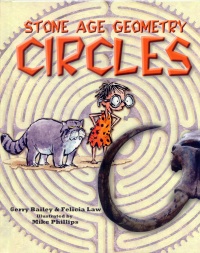 |
Stone Age Geometry: Circles. (Stone Age Geometry).
Gerry Bailey & Felicia Law. Illustrated by Mike Phillips.
St. Catharines, ON: Crabtree, 2014.
32 pp., pbk., hc., pdf & html, $10.95 (pbk.), $21.56 (RLB.).
ISBN 978-0-7787-0513-0 (pbk.), ISBN 978-0-7787-0507-9 (RLB.), ISBN 978-1-4271-8238-8 (pdf), ISBN 978-1-4271-8232-6 (html).
Subject Headings:
Circle-Juvenile literature.
Geometry-Juvenile literature.
Grades 3-7 / Ages 8-12.
Review by Suzanne Pierson.
**** /4
|
| |
|
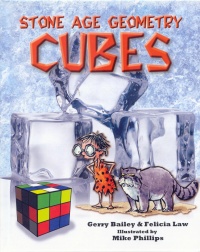 |
Stone Age Geometry: Cubes. (Stone Age Geometry).
Gerry Bailey & Felicia Law. Illustrated by Mike Phillips.
St. Catharines, ON: Crabtree, 2014.
32 pp., pbk., hc., pdf & html, $10.95 (pbk.), $21.56 (RLB.).
ISBN 978-0-7787-0514-7 (pbk.), ISBN 978-0-7787-0508-6 (RLB.), ISBN 978-1-4271-8239-5 (pdf), ISBN 978-1-4271-8233-3 (html).
Subject Headings:
Cube-Juvenile literature.
Geometry-Juvenile literature.
Grades 3-7 / Ages 8-12.
Review by Suzanne Pierson.
**** /4
|
| |
|
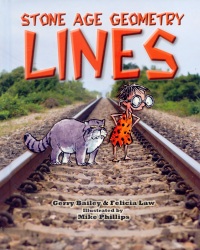 |
Stone Age Geometry: Lines. (Stone Age Geometry).
Gerry Bailey & Felicia Law. Illustrated by Mike Phillips.
St. Catharines, ON: Crabtree, 2014.
32 pp., pbk., hc., pdf & html, $10.95 (pbk.), $21.56 (RLB.).
ISBN 978-0-7787-0515-4 (pbk.), ISBN 978-0-7787-0509-3 (RLB.), ISBN 978-1-4271-9004-8 (pdf), ISBN 978-1-4271-8234-0 (html).
Subject Headings:
Line geometry-Juvenile literature.
Geometry-Juvenile literature.
Grades 3-7 / Ages 8-12.
Review by Suzanne Pierson.
**** /4
|
| |
|
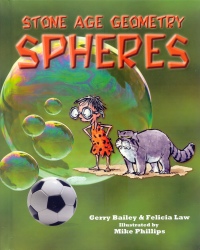 |
Stone Age Geometry: Spheres. (Stone Age Geometry).
Gerry Bailey & Felicia Law. Illustrated by Mike Phillips.
St. Catharines, ON: Crabtree, 2014.
32 pp., pbk., hc., pdf & html, $10.95 (pbk.), $21.56 (RLB.).
ISBN 978-0-7787-0516-1 (pbk.), ISBN 978-0-7787-0510-9 (RLB.), ISBN 978-1-4271-9005-5 (pdf), ISBN 978-1-4271-8235-7 (html).
Subject Headings:
Sphere-Juvenile literature.
Geometry-Juvenile literature.
Grades 3-7 / Ages 8-12.
Review by Suzanne Pierson.
**** /4
|
| |
|
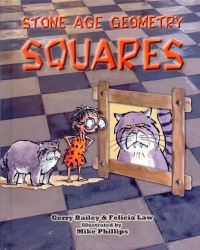 |
Stone Age Geometry: Squares. (Stone Age Geometry).
Gerry Bailey & Felicia Law. Illustrated by Mike Phillips.
St. Catharines, ON: Crabtree, 2014.
32 pp., pbk., hc., pdf & html, $10.95 (pbk.), $21.56 (RLB.).
ISBN 978-0-7787-0517-8 (pbk.), ISBN 978-0-7787-0511-6 (RLB.), ISBN 978-1-4271-9006-2 (pdf), ISBN 978-1-4271-8236-4 (html).
Subject Headings:
Square-Juvenile literature.
Geometry-Juvenile literature.
Grades 3-7 / Ages 8-12.
Review by Suzanne Pierson.
**** /4
|
| |
|
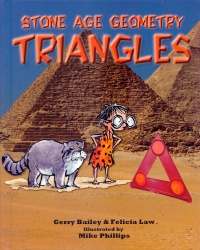 |
Stone Age Geometry: Triangles. (Stone Age Geometry).
Gerry Bailey & Felicia Law. Illustrated by Mike Phillips.
St. Catharines, ON: Crabtree, 2014.
32 pp., pbk., hc., pdf & html, $10.95 (pbk.), $21.56 (RLB.).
ISBN 978-0-7787-0518-5 (pbk.), ISBN 978-0-7787-0512-3 (RLB.), ISBN 978-1-4271-9007-9 (pdf), ISBN 978-1-4271-8237-1 (html).
Subject Headings:
Triangle-Juvenile literature.
Geometry-Juvenile literature.
Grades 3-7 / Ages 8-12.
Review by Suzanne Pierson.
**** /4
|
| |
|

excerpt:
Farmyard flight
Can you believe that a sheep, a duck, and a rooster were the first passengers to ever travel in a hot air balloon?
The French brothers Jacques and Joseph Montgolfier wanted to invent an aircraft that could use smoke and heat to lift it off the ground. On September 19, 1783, they managed to launch a balloon made from paper and cloth. They burned some straw, wool, and dried horse manure underneath the balloon. The straw made enough heat to keep the balloon in the air. The wool and manure made lots of smoke that kept the flame low, so the balloon didn’t catch fire.
The brothers tested their invention using the sheep, duck, and rooster. The paper balloon floated up into the sky and landed safely after eight minutes. A few months later, the brothers demonstrated the first flight with human passengers. (From Stone Age Geometry: Spheres.)
Make room for this series on your book shelves. Even if you have an excellent math section, you still need these books. They are engaging, clearly written, and wonderfully illustrated but just quirky enough to be read by the intended audience.
And parents struggling to remember geometry concepts so they can ‘help’ with the math homework are really going to love them.
Authors Gerry Bailey and Felicia Law have teamed up with illustrator Mike Phillips to create a winning series. The geometry concepts are presented through the interactions of Leo, a Stone Age boy genius, and his cat, Pallas.
The introduction of Leo and Pallas that is included on the Table of Contents page in each book includes information about Pallas cats. This is typical of the extra details that are slipped in throughout the books.
Pallas is wild and he’s OK with being called Stone Age, too; after all, his ancestors have been around for millions of years. And that’s more than you can say for Leo’s! You won’t see many Pallas cats around today, unless you happen to be visiting the icy, cold wasteland of Arctic Siberia (at the top of Russia).
Young math students (and their parents) will learn geometric concepts, everyday applications and examples of the different concepts in nature. For example, in the section “Lines in Nature” in the book “Stone Age Geometry: Lines, readers will learn that “Bright lines on petals help attract the attention of pollinating insects”.
Each book includes a table of contents, glossary, index, key words, and a list of other books and websites, including a site with games and activities with geometric themes. The text is clearly laid out in a variety of fonts that differentiate between the fictional dialogue between Leo and Pallas, and the nonfiction math and science facts. Supporting the text are generous quantities of cartoon sketches of Leo and Pallas and their Stone Age friends, brightly coloured photographs, and drawings.
Stone Age Geometry: Circles includes information on rings, wheels, tangents, spirals, coils and loops, and many more concepts related to circles. The applications range from King Arthur’s Round Table to the London Eye and everything in between.
Stone Age Geometry: Cubes combines a picture of ice cubes and a Rubik’s cube on the cover. Topics include squares, angles, nets, volume, cube-shaped rock crystals, and cubist art. Among the many added details, we learn the story of Pandora’s Box, illustrated with a photograph of an ancient Greek statue of Pandora staring at the box.
Stone Age Geometry: Lines starts with an explanation of how steeplechase races originally ran in a straight line from a church steeple in one town to the church steeple in the next town. “They jumped stone walls, ditches, and hedges – anything that got in their way!” Other topics include line segments, the horizon, bar codes, parallel lines, negative numbers, and angles.
Stone Age Geometry: Spheres is filled with information about spheres in sports, warfare, and nature. Some of the topics included are soap bubbles, seed dispersal, longitude and latitude, parabolas, spheroids, Isaac Newton, cylinders, erosion, friction, and even the double helix of our DNA.
Stone Age Geometry: Squares goes far beyond “4 corners that are the same size and shape”. In this book, you will learn about grids, coordinates, parallelograms, tessellation, mosaics, square dancing, and famous squares around the world, such as London’s Trafalgar Square and Beijing’s Tiananmen Square.
Stone Age Geometry: Triangles uses examples of triangles in nature and in manufactured structures, such as the Eiffel Tower, to illustrate the different types of triangles. Musical triangles, ramps, pyramids, and prisms are investigated in this book. Pentagon and hexagon shapes are also included.
Throughout these books, the two main characters use the geometric concepts in a Stone Age setting to explain the key elements of the geometry in a totally quirky way. For example, Leo and Pallas use scalene triangles to build a new bike for Pallas.
The members of SACC – the Stone Age Cycle Club – all want a new bike like his. They all want a new frame that’s sturdy and won’t fall to pieces.(From Stone Age Geometry: Triangles.)
“Stone Age Geometry” is an excellent series of math books that clearly explain and illustrate the geometry concepts with the added bonus that they are humorous enough to ensure they will not sit on your shelves for long.
Highly Recommended.
Suzanne Pierson is a retired teacher-librarian, currently instructing Librarianship courses at Queen’s University in Kingston, ON.

To comment
on this title or this review, send mail to cm@umanitoba.ca.
Copyright © the Manitoba Library Association. Reproduction for personal
use is permitted only if this copyright notice is maintained. Any
other reproduction is prohibited without permission.
Next Review
| Table of Contents For This Issue - December 19, 2014.
CM Home | Back Issues
| Search
| CM Archive
| Profiles Archive
|





